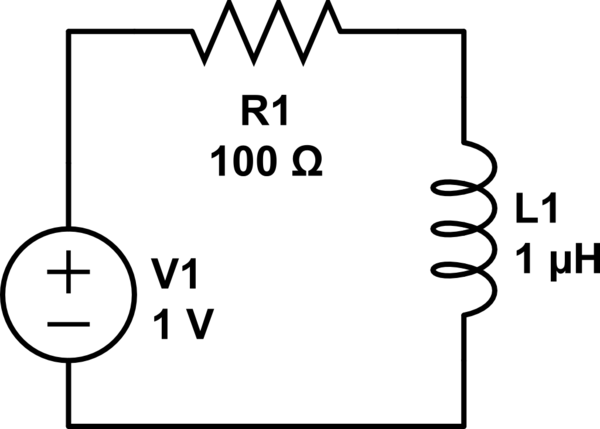
Classroom Microphone System Circuit

This audio amplifier circuit is designed for use in classrooms to alleviate the strain of lecturing in noisy environments. It incorporates the power amplifier IC LM380, which delivers an output of 2 watts, adequate for confined spaces. The amplifier is portable, allowing for the entire circuit and battery to be housed within the speaker box. The circuit utilizes a preamplifier stage based on the NPN transistor BC548 and a power amplifier stage centered around the LM380. An external collar microphone can be connected to the input via an audio jack. The voice signals are amplified by the transistor (T1) and sent to the input of IC1 through a volume control (VR). Capacitor C3 is employed to mitigate undesirable howling from the speaker. The LM380 serves as a general-purpose audio amplifier with a fixed gain of 34 dB. It is designed to be short-circuit proof and features internal thermal limiting. The IC operates within a voltage range of 5 to 22 volts DC and is available in a dual in-line package. The classroom microphone system circuit should be assembled on a common PCB. A 9-volt PP3 battery is recommended for a compact design. For extended use, a 6-volt, 4.5 Ah rechargeable battery is suggested, along with a charger input facility if this option is selected. A small, high-quality 8-ohm speaker should be used. If the output is insufficient, a higher power amplifier IC can be substituted for the LM380.
The audio amplifier circuit is structured to enhance sound clarity and volume in environments where background noise may interfere with communication. The integration of the LM380 power amplifier chip ensures that the system can provide sufficient audio output for small to medium-sized classrooms. The preamplifier stage, utilizing the BC548 transistor, serves to enhance the input signal from the microphone before it reaches the power amplifier, ensuring that even quiet voice signals are adequately amplified.
The connection of an external collar microphone via an audio jack allows for flexibility in usage, enabling the lecturer to move freely while maintaining sound quality. The volume control (VR) provides an easy means to adjust the output level to suit the specific acoustic environment of the classroom. The inclusion of capacitor C3 is critical for preventing feedback issues, which can lead to unpleasant howling sounds, particularly when the microphone is in close proximity to the speaker.
The LM380's design features, such as short-circuit protection and thermal limiting, contribute to the reliability and safety of the circuit during prolonged operation. The recommended power supply options, including the compact 9-volt PP3 battery and the larger 6-volt rechargeable battery, provide versatility depending on the intended use duration. The circuit's assembly on a PCB facilitates a neat and organized layout, enhancing durability and ease of maintenance.
For optimal performance, the choice of an 8-ohm speaker is essential, as it matches the output specifications of the LM380. Should the application require greater output power, substituting the LM380 with a higher capacity amplifier IC is a viable option, allowing for scalability based on the specific needs of the classroom environment. Overall, this audio amplifier circuit presents a practical solution for enhancing audio communication in educational settings.This audio amplifier circuit is useful in classrooms to reduce the strain of lecturing, if the surrounding environment is noisy. It uses the power amplifier IC LM380 that gives 2 watts output which is sufficient in a confined area.
The amplifier is portable and the whole circuit and the battery can be enclosed in the Speaker box itself. The circui t uses a preamplifier stage around NPN transistor BC 548 and a power amplifier around LM380. An external Collar MIC can be given to the input using an audio jack. The voice signals are amplified by T1 and fed to IC1 input through the volume control VR. Capacitor C3 reduce the undesirable howling from the speaker. LM380 is the general purpose audio amplifier and its gain is internally fixed at 34 dB. Its output is short circuit proof with internal thermal limiting. The IC works between 5 to 22 volts DC and is dual in line version. Assemble the classroom microphone system circuit on a common PCB. A 9 volt PP3 battery can be used to make the unit compact. If the amplifier is used for many hours, a 6 Volt 4. 5 Ah rechargeable battery is a nice choice. If it is used, a charger input facility should be provided. Use a small good quality 8 Ohms speaker. If the output is not sufficient, use a high power amplifier IC circuit in the place of LM 380. 🔗 External reference
The audio amplifier circuit is structured to enhance sound clarity and volume in environments where background noise may interfere with communication. The integration of the LM380 power amplifier chip ensures that the system can provide sufficient audio output for small to medium-sized classrooms. The preamplifier stage, utilizing the BC548 transistor, serves to enhance the input signal from the microphone before it reaches the power amplifier, ensuring that even quiet voice signals are adequately amplified.
The connection of an external collar microphone via an audio jack allows for flexibility in usage, enabling the lecturer to move freely while maintaining sound quality. The volume control (VR) provides an easy means to adjust the output level to suit the specific acoustic environment of the classroom. The inclusion of capacitor C3 is critical for preventing feedback issues, which can lead to unpleasant howling sounds, particularly when the microphone is in close proximity to the speaker.
The LM380's design features, such as short-circuit protection and thermal limiting, contribute to the reliability and safety of the circuit during prolonged operation. The recommended power supply options, including the compact 9-volt PP3 battery and the larger 6-volt rechargeable battery, provide versatility depending on the intended use duration. The circuit's assembly on a PCB facilitates a neat and organized layout, enhancing durability and ease of maintenance.
For optimal performance, the choice of an 8-ohm speaker is essential, as it matches the output specifications of the LM380. Should the application require greater output power, substituting the LM380 with a higher capacity amplifier IC is a viable option, allowing for scalability based on the specific needs of the classroom environment. Overall, this audio amplifier circuit presents a practical solution for enhancing audio communication in educational settings.This audio amplifier circuit is useful in classrooms to reduce the strain of lecturing, if the surrounding environment is noisy. It uses the power amplifier IC LM380 that gives 2 watts output which is sufficient in a confined area.
The amplifier is portable and the whole circuit and the battery can be enclosed in the Speaker box itself. The circui t uses a preamplifier stage around NPN transistor BC 548 and a power amplifier around LM380. An external Collar MIC can be given to the input using an audio jack. The voice signals are amplified by T1 and fed to IC1 input through the volume control VR. Capacitor C3 reduce the undesirable howling from the speaker. LM380 is the general purpose audio amplifier and its gain is internally fixed at 34 dB. Its output is short circuit proof with internal thermal limiting. The IC works between 5 to 22 volts DC and is dual in line version. Assemble the classroom microphone system circuit on a common PCB. A 9 volt PP3 battery can be used to make the unit compact. If the amplifier is used for many hours, a 6 Volt 4. 5 Ah rechargeable battery is a nice choice. If it is used, a charger input facility should be provided. Use a small good quality 8 Ohms speaker. If the output is not sufficient, use a high power amplifier IC circuit in the place of LM 380. 🔗 External reference





